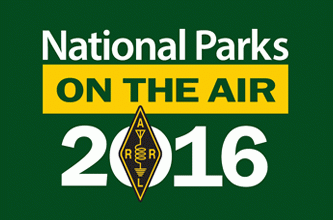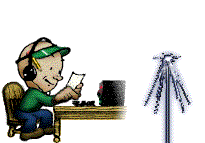During the weeks ahead, I will be posting a few of my old antenna projects. My old webpages are no longer operational and Lee tells me he has been asked if they are still available.
This one is great for new hams with just an HT who wish to “get out” further than with a standard HT antenna.



Designed by W2IK – all rights reserved

You, too, can build a “W2IK DESK BUDDY”
It’s a two meter antenna to use in those small apartments or restricted neighborhoods. It sitson a desk and is a full-fledged ground-plane that is easy to store when not in use. (The vertical element unplugs from the rest of the antenna) What’s more, there are no ground-plane rods sticking you when you least expect it! Finally make those fringe repeaters that are hit and miss with your HT! Just place the “Desk Buddy” on any surface: desk, table or dresser, plug it into your HT or house rig and start talking through repeaters you never could reach. Use it out on your deck, patio or anywhere you need that little extra punch. The cost to build… about 15 bucks. Pictured to the right is a view of the finished antenna, ready to go. Hundreds of these have been built from as far away as Australia!

PARTS NEEDED: (most can be bought at “Lowe’s” or “Home Depot”
PVC Pieces (all Schedule 40):
4 – 1/2″ Elbows
3 – 1/2″ Tees
1 – 1/2″ Flat End Plug (NOT “Cap”)
1 – 1/2″ Coupling
2 – lengths 1/2″ Tubing 14 1/2 inches long
6 – lengths 1/2″ Tubing 6 3/4 inches long
1 – length 1/2″ Tubing 11 3/4 inches long
PVC cement
Other Parts:
3 – 36 inch lengths of brass rod 1/8 inch dia. (“HomeDepot” brazingrods Lincoln Electric stk: KH510 3pack in plastic tube for about $4.25)
1 – 10 foot length, RG-8X with connector on ONE
end to fit your rig. (PL-259 or BNC)
Epoxy
1 – Set (male and female) push on “bullet” crimp connectors as seen inphoto to right

W2IK DESK BUDDYBUILT BY A HAM INAUSTRALIA


PHOTO 1
Create a square, flat base by using the four elbows with the two 14 1/2 inch lengths of tubing opposite each other AND two “Tees” attached to four lengths of 6 3/4 inch tubing with both “Tees” laying flat and both pointing in. (refer to photo 1) Do NOT cement the joints at this time.


Using the remaining two lengths of 6 3/4 inch long tubing, install one on each opposite sides of the last “Tee” with the empty (center) hole facing up (vertical). Now install this three piece section between the to “Tees” on the square base with the now center “Tee” facing up as shown in photo 2. Install the 11 3/4 inch length of pvc tubing into the vertical “Tee” hole so this now becomes the vertical section. Refer to the photo at the very top of the page to get the concept.
PHOTO 2


Using the photo to the RIGHT as a guide, drill a 1/8 inch hole in each corner elbow so it will admit an end of the brass rods. Each of the four holes should be at a 90 degree angle facing inward and upward. Do NOT install the rods at this time. Two of the three brass rods will create the FOUR radials. See the below details on creating the radial section of the antenna.

Take the pvc coupling and right below the center drill a 1/8 inch hole straight through both sides of the coupler. Turning the coupler 90 degrees, drill another hole 1/8 of an inch BELOW the holes you’ve made so that two lengths of brass rod can be inserted criss-crossed through the coupler (see photo on the right). With the rods placed so that EXACTLY one half of each protrudes out of each hole carefully solder the joint of the cross in the coupler so both rods are joined and FOUR equal lengths are coming out of the coupler. This is the radial section. Place this coupling on the top of the vertical pvc tubing that’s attached to the base with a rod end matching up with the corner elbows. Carefully and slowly bow each rod end so it comes near the holes you’ve drilled on each elbow. DO NOT FORCE OR MAKE SHARP BENDS. After the approximate bends have been made, take the coupler off the vertical tubing and slide each rod end into the elbow holes. Then replace the coupler on the vertical tubing. Refer to the finished picture at the TOP of the webpage for reference. Where the vertical tubing on the base section fits into the “Tee”, drill a hole in the vertical tubing so you can now snake the bare end of the RG-8X into it and up, out the top, passing the radial cross. Bare wire carefully leaving about 2 inches of braid dressed out and away from the center conductor. Solder the braid, carefully, to the radial cross (rods) in the coupler. Strip 1/16 of an inch off the coax’s center conductor’sinsulation and crimp and then solder the wire on the FEMALE bullet connector. Do NOT remove the insulation on the bullet connector. Drill a hole at the top of the pvc “plug” adequate enough to ensure a snug fit of the bullet connector and push it in from the bottom it so it surfaces above the plug (see photo). Use epoxy to secure this connector to the pvc plug from the inside. Then carefully push the pvc plug into the top of the cross-radial coupler. Make sure the center conductor does not short to the radial/braid assembly. Remember: Center of coax to bullet, Braid of coax to rods.
Tape the coax cable at the bottom, as it comes out of the vertical section, to the base pvcsquare so the cable can’t be pulled from the connections you’ve just made to the radials and the top plug.

radials BEFORE bending

pvc plug with “bullet female”installed and wired to thecenter wire of the coax


Using the picture to the LEFT as a guide, take the remaining brass rod and cut it to a length of 19 3/4 inches. On one end, install the male crimp connector by removing the connector’s insulation, spread open the crimp
area and insert the rod. Re-wrap the crimp area tightly around the rod and solder itcompletely around as shown in the picture. It should make a solid fit from rod toconnector. Plug the rod into the vertical mast/pvc and using an antenna analyzer, with the antenna sitting on a table away from other metal objects, tune the vertical rod by snipping off from the tip by increments of 1/16 an inch until the antenna reads under 1.5:1 in the two meter band. When you are happy with the results you can glue the pvc base together and add a drop of epoxy to the vertical rod top. That’s all there is to it! When you wish to put it away, just remove the vertical rod for an easier store. If you only own an HT, you may wish to even use this antenna outdoors while doing a public service event by placing it on the roof of a non-moving car for greater range than your HT whip. Use it anywhere your imagination takes you. Good Luck! PS: By using the left-over brass rod to make a plug-in vertical section about 6 1/2 inches long, you will have a 70 cm ground-plane whenever you need it!
DESIGN BY BOB HEJL-W2IK all rights reserved.
plug the vertical rod in the top. note radials are bent and inserted in elbows















 In many areas I have noticed a tendency of people making a distinct effort to sound like a “LID” on local repeaters. Since this appears to be the new style in Amateur Radio, I thought I would present this incomplete guide to radio LID-dom.
In many areas I have noticed a tendency of people making a distinct effort to sound like a “LID” on local repeaters. Since this appears to be the new style in Amateur Radio, I thought I would present this incomplete guide to radio LID-dom.